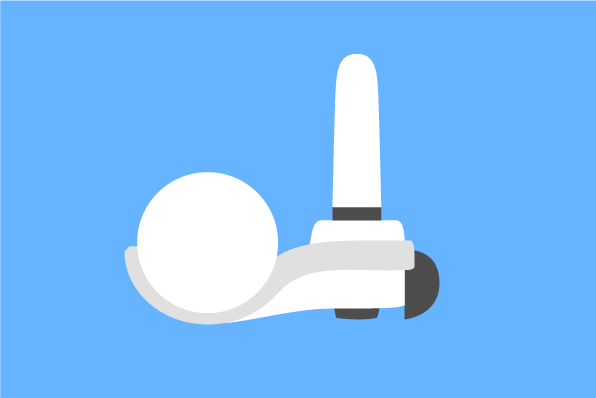Energy Saving Tip by Penguin: Install a water filter
WATER
Why use a water filter instead of bottled water?
bottled water waste
The impact of bottled water on the environment is monumental, wracking up environmental harm from the moment the plastic bottle is made and filled, to the moment the used bottle is tossed in the trash. The process of making plastic water bottles sold in the United States alone uses approximately 1.5 million barrels of oil, according to the Earth Policy Institute–that’s enough to run 100,000 cars for an entire year. And that doesn’t even take into account the inordinate amount of oil needed to transport water bottles all over the world–a bottle of Fiji water enjoyed in New York City, for example, would have traveled nearly 8,000 miles from Fiji to New York.
Adding insult to injury, people consume most water bottles outside of the home, where finding a recycling bin can prove a daunting task. Nearly 80 percent of water bottles are not recycled, resulting in 38 billion water bottles clogging landfills each year where they take 700 years even to begin to decompose.
misconception about bottled water
Many people drink bottled water because they believe it to be a higher quality, cleaner, and better-tasting, but that’s not necessarily true. In fact, an estimated 25 percent or more of bottled water is really just tap water in a bottle—sometimes further treated, sometimes not.
So why are we paying for someone else to bottle our water when we could simply filter our water at home? Bottled water must just taste better, right? It would appear not. Good Morning America conducted a blind taste test of water using its studio audience as guinea pigs and guess which water source was the clear winner? New York City tap water. Yes, that’s right: Tap water beat out Poland Spring and Evian.
Okay, so tap water tastes the same as bottled water and is far less harmful to the environment but is it safe? In the U.S., public water is regulated by the Environmental Protection Agency (EPA), which requires multiple daily tests for bacteria and makes results available to the public. The Food and Drug Administration, which regulates bottled water, only requires weekly testing and does not share its findings with the EPA or the public. In 1999, after a four-year review of the bottled-water industry and its safety standards, NRDC concluded that there is no assurance that bottled water is cleaner or safer than tap.
BOTTOM LINE
According to an extensive study done by NRDC and taking into account federal standards to regulate bottled and tap water, there is no assurance that bottled water is cleaner or safer than tap. And many blind tests show that bottled water doesn't necessarily taste better than tap.
Unless you live in a rural community with a higher likelihood of pesticide runoff contamination, or if you get your water from a private (unregulated) well, or live in an old home (built before 1986) with possible lead contamination from aging pipes, using a water filter is a smarter choice in terms of cost and the impact on the environment.
Sources: Care2, Ban the Bottle, NRDC
Getting started
Read your municipal water quality report
You should first check with your municipal water service company for a Annual Water Quality Report, also known as a Consumer Confidence Report to figure out what's in your water. You also can test your water yourself. Standard consumer test packages are available through large commercial labs at a relatively reasonable price. Then you could figure out what contaminants should be filtered through your water filter system.
Look for NSF certified filters
You should purchase filters certified by NSF International. These models are designed to filter out specific contaminants, so you can select one based on your needs. When you see “NSF Standard 42,” it means that the filter passes for “aesthetic effects,” like removing chlorine, which makes water taste and smell better. If you’re more focused on the health effects of filtration, look for a product that passes “NSF Standard 53,” which evaluates a list of dangerous impurities, like lead and giardia. If a filter is “NSF Standard 401-certified,” it has been shown to remove trace amounts of prescription drugs and pesticides.
source: Apartment Therapy
Water filter types
Pitcher
Pros
> Inexpensive
> No installation required
Cons
> The least effective in filtering
Faucet-Mounted: Carbon Block
Pros
> Inexpensive
> Easy to install
Cons
> Could be bulky when washing dishes with the filter attached to the faucet
> Not as effective in filtering as under-sink systems
Under-Sink: Carbon Block
Pros
> Most effective in filtering
> Keeps essential minerals in water
Cons
> More expensive than pitcher or faucet-mounted systems
> Harder to install than faucet-mounted systems
Under-Sink: Reverse-Osmosis
Pros
> Most effective in filtering
Cons
> Removes essential minerals from water
> More expensive than pitcher or faucet-mounted systems
> Harder to install than faucet-mounted systems
> Waste of several gallons of water for every gallon filtered
BOTTOM LINE
Pitcher water filters are the cheapest but the least effective in removing contaminants. Reverse-Osmosis water filters are the most efficien in filtering but remove essential minerals, which is critical for your body's health. (Please check out this article on what constitutes a healthy water: Analyzing & comparing brands of bottled water) So we recommend carbon block water filters which maintain essential minerals or Reverse-Osmosis filters with remineralizing filters.
Best water filters
Best faucet-mounted carbon filter
PUR 3-Stage Advanced Water Filter - $26.97
> Certified to remove over 70 contaminants, including 99% of Lead, 92% of pesticides, 96% of Mercury
> NSF 42, 53, 401 certified
> Easy 1-click installation
PUR Replacement Filter 3pack - $22.49
> Each filter provides up to 100 gallons of filtered water
> Average consumption of 1200 gallons of water per year equals $89.96/year of replacement filter costs
Best under-sink carbon filter
Aquasana AQ-5300 - $94.34
> Certified to remove over 68 contaminants, including lead, mercury, asbestos, pesticides, pharmaceuticals, chlorine, chloramines and more
> NSF 42, 53, 401, P473 certified
> Easy to install without plumber's help
Aquasana AQ-5300R Replacement Filter - $64.99 ($55.24 with subscribe)
>Each filter provides up to 600 gallons of filtered water
> Average consumption of 1200 gallons of water per year equals $129.98$/year ($110.48/year with subscribe) of replacement filter costs
Best under-sink reverse osmosis with remineralizing filter
APEC ROES-PH75 - $212.86
> 6-stage system removes up to 99% of bacteria, viruses, cysts, organics, chemicals & more
> Easy to install without plumber's help
Climate change's threat to penguins
The penguins live much of the year on Antarctic sea ice, which is disappearing or breaking apart because of the heat-trapping gases released by humans’ use of fossil fuels. The penguins need the ice to breed, raise their young and escape predators.
If listed as threatened, the birds would join a couple of dozen species that the federal government considers threatened by climate change, including polar bears, two kinds of seals, and 20 coral varieties.











